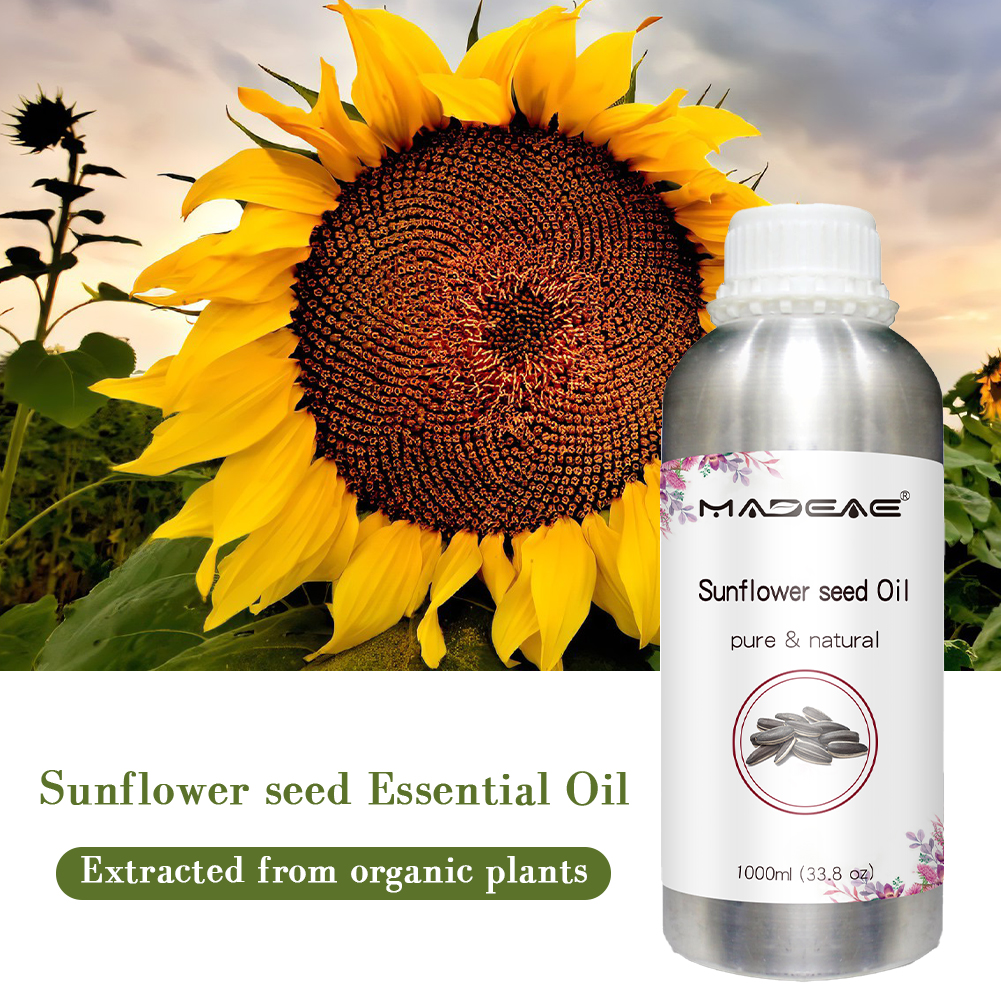You might have seen sunflower oil on store shelves or seen it listed as an ingredient on your favorite healthy vegan snack food, but what exactly is sunflower oil, and how is it produced?
Here are the sunflower oil basics you should know.
The Sunflower Plant
It’s one of the most recognizable plants on the planet, appearing on Grannie’s wallpaper, the covers of children’s books, and rustic-inspired flip calendars. The sunflower is actually a member of the genus Helianthus, which includes over 70 unique species of annual and perennial flowering plants. Plus, it just has such a sunny personality that we can’t help but love it.
The circular yellow formation of petals, the spiraling fuzzy florets, and the towering stature of the sunflower (sometimes reaching 10 feet—and yes, we’re a little intimidated that a flower is taller than us) are the features that instantly separate this plant apart from the rest.
Sunflowers originated in the Americas and were first domesticated over 5000 years ago by Native Americans in need of a healthy source of fat. They aren’t particularly difficult to grow, making them an ideal crop that can be cultivated in almost any climate.
In fact, sunflowers are so robust and quick-growing that they sometimes get in the way of other plants in the field, such as potatoes and bean sprouts.
From the chilly northern regions of Wisconsin and upstate New York to the Texas plains and the swampy bogs of Florida, you can find sunflowers of all shapes and sizes – each with seeds that yield varying qualities of oil.
How It’s Made
The sunflower seeds themselves are made up of a tough protective outer shell, with a soft and tender kernel inside. Within the kernel is the majority of the nutritional value, so the beginning of the manufacturing process focuses on cleaning, screening, and de-hulling the seeds to obtain top-quality kernels for oil production. It’s kind of a lot of work.
With complex centrifugal machinery (spinning at rapid rates), the shells are separated and shaken out so that only the kernels remain. While some shells may remain in the mixture, they can also contain small amounts of oil.
Through grinding and heating at high temperatures, sunflower seeds are ready to be pressed so that oil is extracted in high quantities. When done properly, producers can yield up to 50% oil from the seed, using the leftover meal for other industrial or agricultural uses.
From there, additional oil is extracted using solvents like hydrocarbon and a distillation process that further refines the product. This step is key to creating a colorless, odorless oil with a neutral flavor suitable for cooking.
Sometimes, sunflower oil is mixed in with other vegetable oils to create generic cooking oil products, while other producers aim to produce 100% pure sunflower oil, giving consumers more transparency into what they’re buying. Stick to the good stuff, and you’ll be in the clear.
Consumption and Other Facts
We’re mainly interested in oil today, but sunflower seeds are, of course, very popular as snacks for humans and animals alike! More than 25% percent of sunflower seeds (typically the smallest varieties) are used in birdseed, while about 20% is for direct human consumption. Is it weird that we’re basically eating birdseed? Nah, we think it’s fine … probably.
If you’ve ever been to a ballgame or hung around a campfire with friends, you’ll know that chewing and spitting sunflower seeds is truly a national pastime, even if it looks … well, we’ll be honest, it looks gross.
While a huge portion of the value of a sunflower comes from the oil (about 80%), leftover meal and scraps can be used as animal feed, fertilizer, or other industrial applications. It’s like the circle of life, except it’s just this one flower.
Post time: Dec-28-2023



